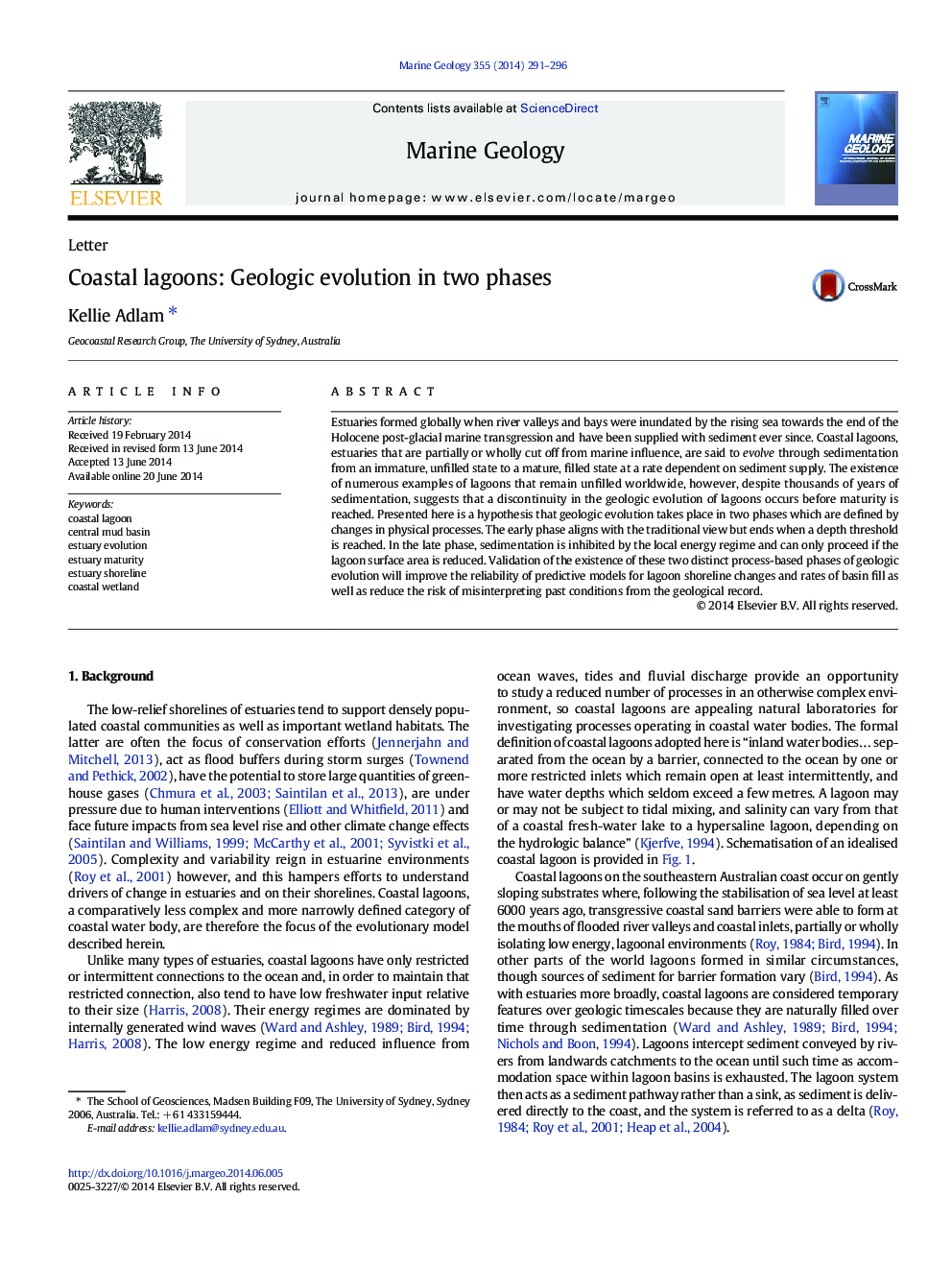| Article ID | Journal | Published Year | Pages | File Type |
|---|---|---|---|---|
| 4718279 | Marine Geology | 2014 | 6 Pages |
•Traditionally, coastal lagoons are assumed to fill in line with sediment supply•Evidence suggests that supply-dependent fill only applies to early geologic evolution•A natural threshold may introduce new variables that limit infill and slow evolution•A model is proposed whereby late phase evolution must proceed through fetch reduction•The model requires testing with data on coastal lagoon dimensions and energy regimes
Estuaries formed globally when river valleys and bays were inundated by the rising sea towards the end of the Holocene post-glacial marine transgression and have been supplied with sediment ever since. Coastal lagoons, estuaries that are partially or wholly cut off from marine influence, are said to evolve through sedimentation from an immature, unfilled state to a mature, filled state at a rate dependent on sediment supply. The existence of numerous examples of lagoons that remain unfilled worldwide, however, despite thousands of years of sedimentation, suggests that a discontinuity in the geologic evolution of lagoons occurs before maturity is reached. Presented here is a hypothesis that geologic evolution takes place in two phases which are defined by changes in physical processes. The early phase aligns with the traditional view but ends when a depth threshold is reached. In the late phase, sedimentation is inhibited by the local energy regime and can only proceed if the lagoon surface area is reduced. Validation of the existence of these two distinct process-based phases of geologic evolution will improve the reliability of predictive models for lagoon shoreline changes and rates of basin fill as well as reduce the risk of misinterpreting past conditions from the geological record.
